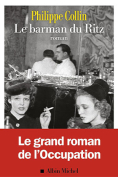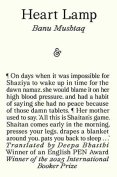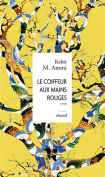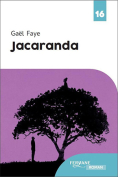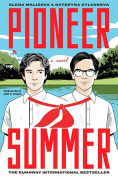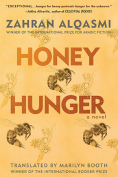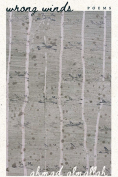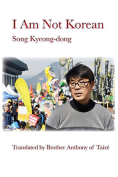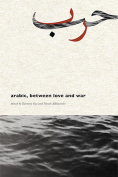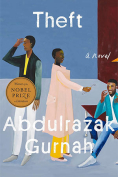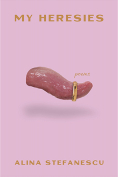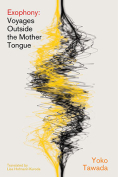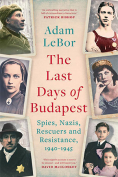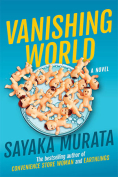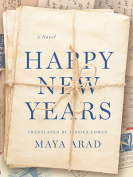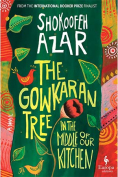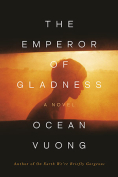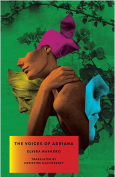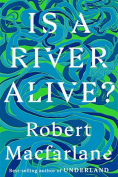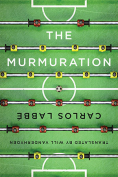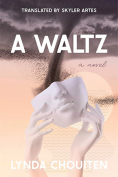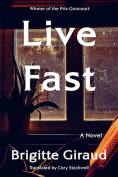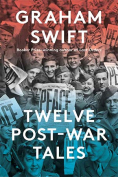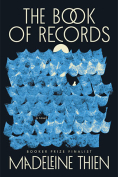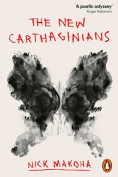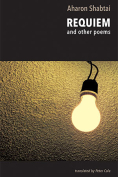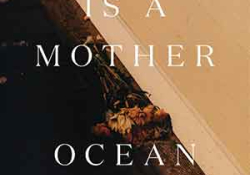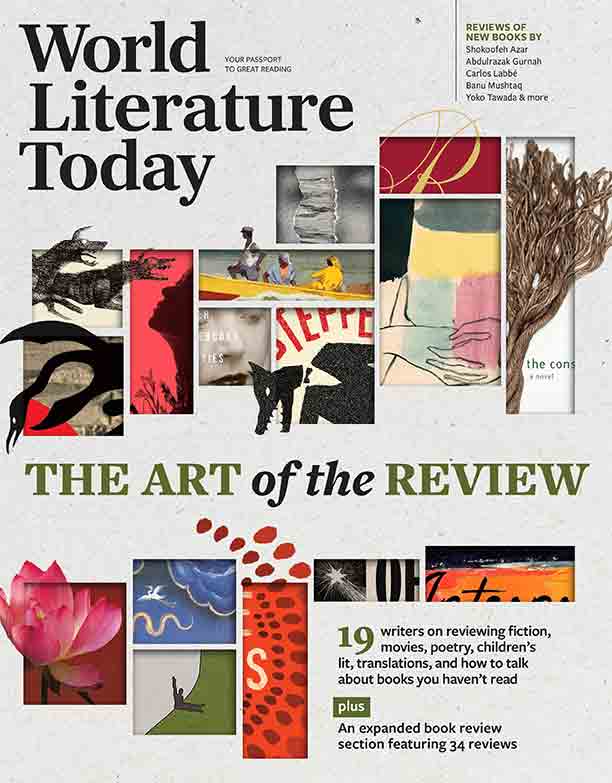The Emperor of Gladness by Ocean Vuong
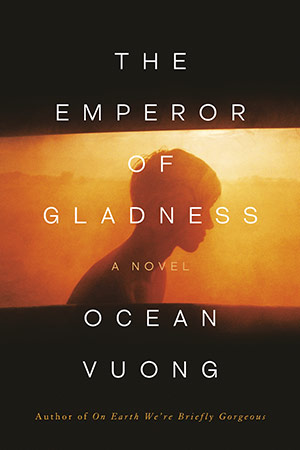
New York. Penguin Press. 2025. 402 pages.
Ocean Vuong deserves the highest respect as poet and memoirist, but his new novel suffers from a shocking aesthetic imbalance. Though The Emperor of Gladness attempts to crystallize charity and compassion in a world besot by violence, racism, cruelty, and indifference, it loses its way by embracing hypertrophic metaphors. It opens like a slow-moving filmic track shot of landscape in East Gladness, a bleak Connecticut town, with accompanying narrative that sounds like a mix of Thornton Wilder, Flannery O’Connor, and William Faulkner, but the writing becomes diffusive, blurring history and contemporaneity: “We are the blur in the windows of your trains and minivans, your Greyhounds, our faces mangled by wind and speed like castaway Munch paintings.”
Back roads are wide and deep; birches shatter at dawn, and in August, “the train tracks blaze so hot the rubber on your soles would melt if you walked on them for more than a minute.” Yet “despite this heat everything green grows as if in retribution for the barren, cauterized winter, moss so lush between the wooden rail ties that, at a certain angle of thick, verdant light, it looks like algae, like the glacial flood returned overnight and made us into what we were becoming all along: biblical.” Naturalism, Munch, and the Bible (with an ill-fated boy named Noah in the mix) all within a few pages—not to mention the book’s title that recalls Wallace Stevens’s famous poem (“The Emperor of Ice-Cream”) about sensuous delight and death! But this is hardly the end of it: there are references to runaway slaves, Sojourner Truth, Samuel Colt, and a freighter bridge, “the last way out of town,” “named for the Wampanoag chief who led a rebellion here to take back his land from Puritans.” Devastation and dystopia all in one circle, though Dante is but a dim shadow in Vuong’s wildly expansive context that incorporates Dostoevsky, Vonnegut, and Kesey in a strenuous attempt at intertextual reference and significance.
A pity because the novel has enough raw human material and plain reality to thrive on its own, without the extravagant artifice that Vuong often desperately applies. The central plot opens with nineteen-year-old Vietnamese American Hai, who seems suicidally bent on leaping off King Philip’s Bridge, until he is urged to stop by the “bent stub” octogenarian Lithuanian widow Grazina, who offers him refuge in her odorous, decaying home on Hubbard Street, known locally as the Devil’s Armpit because of a massive spill of toxic chemical sludge that has leached into the soil and pipes. Her house is stuffed with a collection of owl figurines (in wood, porcelain, clay, and oil paintings) and a basement filled mainly with junk. Grazina suffers from midstage prefrontal lobe dementia that causes her confused timelines and delusions. She talks to the furniture and mistakes thunder for Nazi artillery. She believes that carrots are an antidote to the blues, stomps heavily on dinner rolls to create a magic spell, and softly sings “Silent Night” in her sleep. But when overcome with flights of mad paranoia, she can be excessively violent. Her two adult children (son and daughter) have abandoned her for the most part. She needs a “carer,” having lost her live-in nurse. Besides her daily set of fourteen pills, she lives off frozen Salisbury steak dinners. A secret opioid-addict himself, Hai becomes her unofficial carer, inventing a fantasy game of war in which they both play heroic battlers against life’s onslaughts of deception, indifference, and cruelty. Hence, Vuong’s slim cross-references to Vonnegut and Kesey, novelists noted for their fictions about wars of the body and mind.
Essentially a distorted story about such wars in the small town outside Hartford, the novel tries too hard to widen and deepen its moral compass. Spanning all four seasons, it has some wonderful passages of poetic reflection about charity and kinship, and some splendid sections of sharp social satire. It also has very effective moments that capture the quaking hallucinations and somewhat gothic psychological inscapes of characters. Vuong attempts to gather all the characters and even the ghosts or spirits of place so that they will serve his story and backstory. But his grand ambition often makes the fiction feel like a goose being fatally force-fed to produce foie gras.
Hai’s own story would ordinarily be enough for a good novel. Raised by his mother, grandmother, and Aunt Kim (“women spared by war in body but not in mind, and together they found a way to scavenge a kind of life in wind-blasted Hartford”), Hai’s life is circumscribed by deception. He lies to his small, bewildered, and broken mother that he is studying medicine to heal people while he is really a minor employee at HomeMarket, a casual fast-food restaurant that thrives on deceiving customers that cornbread is actual cake. His cousin Sony’s father was not a brave soldier but an employee in a US army base laundry room, and his war wound was not from a Vietcong terror attack but an accidental discharge of a grenade from a belt loop he had forgotten to remove.
Hai’s very name is underlined for irony. Its Vietnamese meaning is “sea,” and he is made to feel as if he’s “drifting through the wide-open waters of East Gladness” or, more threateningly, as if he’s on “a life raft of mistakes, heading downriver, toward whatever iceberg [lies] ahead.” But sea and river are not enough: Hai is also likened to cigarette sparks floating through empty streets. “My ghost is in pieces,” he laments. And there’s more bad writing. His eccentric doe-eyed cousin Sony (named after a foreign technological brand and a Civil War buff to the point of madness) complains, “I’m no good at goodness.” There is also a moment when Grazina loses a tooth while chewing on a cookie, prompting a priceless description of “the snaggled incisor sticking up from the cookie like a tombstone on a plot of earth.” When Hai lies in a dumpster laden with garbage bags and dead leaves, Vuong writes: “The trash was no longer just trash—but evidence. Because to discard is to move on. . . . Lying on garbage was the closest to weightlessness he’d ever been . . . waste being the proof of having lived at all. . . . He was a container inside a container filled with containers contained by space—and somehow this made him full.”
Subsidiary characters who could simply work for black comedy are squeezed into a narrative frame to make points about heartless capitalism, political indoctrination, and nationwide deception. BJ, the tall, hefty “butch” manager at Hai’s workplace, takes to the fraud of televised freestyle wrestling. Red-haired Maureen, cashier, has a foul mouth and the craziest worldview this side of Marjorie Taylor Greene, while Russia, the white tattooed “stoner” with a nose ring, is possibly a slant reference to the US as warped political asylum. Such excesses overcome the wonderfully comic set pieces that Vuong offers from time to time. The novel moves from the stricken to the extravagantly delusional: bleakly empty landscapes are offset by the overdone fantasy war games played by Grazina and Hai, which read like snatches of Vonnegut, James Bond, Stalin, Nazi Germany, and Star Wars.
In the final analysis, the largest flaw (apart from desperately mixed metaphors and stilted inner monologues) is Vuong’s lack of conviction about his own fiction. “I fucked up! I chose the wrong story to live in!” confesses Hai. If he only knew how his words are an ironic indictment of Vuong’s incredibly flawed novel.
Keith Garebian
Mississauga, Ontario
